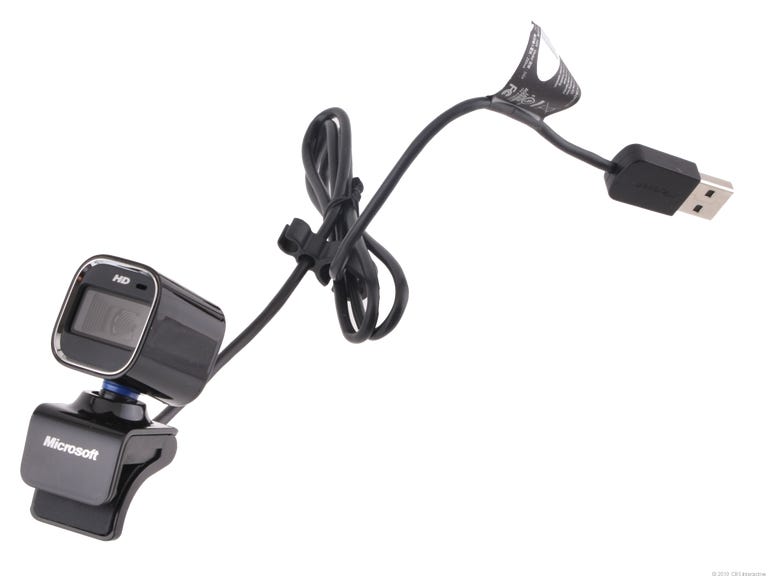 Why You Can Trust CNET
Why You Can Trust CNET Microsoft LifeCam HD-6000 review: Microsoft LifeCam HD-6000
Microsoft LifeCam HD-6000
Microsoft's earlier efforts in the LifeCam Webcam series certainly missed the mark, but the latest LifeCam HD-6000 for notebooks introduces 720p HD video at up to 30 frames per second, an improvement over the standard cameras built into almost all current notebooks. The Microsoft LifeCam HD-6000 played smoothly with Google Chat, Skype, and Windows Live Messenger in our testing, but the experience is marred by constant autofocusing that even happens during slight movements. Minor irritations aside, we recommend the $60 Microsoft LifeCam HD-6000 to any laptop owner shopping for a high-definition Webcam.
The Good
The Bad
The Bottom Line
Design and features
Measuring just 1.1 inch wide and 2.44 inches long, the Microsoft LifeCam HD-6000 is purposefully small and features a thin plastic clip on the bottom that situates it on top of your laptop screen while you chat. The wide-angle lens rotates up and down on a small axis and the entire camera swivels 360 degrees to allow for a full rotation point of view. Finally, a small button on top activates Windows Live Messenger, although the camera also works with other chat programs like Google Chat, AIM, and Skype.
That said, you do have to install the Microsoft LifeCam software in the box before your computer will recognize the camera, but we recommend checking for driver updates on the Microsoft Web site prior to using it. We should also note that Microsoft gives stringent system requirements for OS (Windows 7, Vista, XP SP2 or higher), processor (Intel Dual-Core 1.6GHz higher with 1GB of RAM or Intel Dual-Core 3.0GHz with 2GB of RAM), and hard-drive capacity (at least 1.5GB free). As is always the case with Microsoft Webcams, the HD-6000 won't work with a system running Mac OS.
Once installed, the Microsoft LifeCam software acts a central hub for changing settings like image quality and microphone volume, video resolution, and image adjustments. In terms of resolution, the software offers a range of settings from 160x120 all the way up to 1,280x720 HD video, and you also get the option to toggle TrueColor, an autobrightness assistant that optimizes your shot in poor lighting conditions. During testing, we found that keeping the TrueColor box checked helped to bring out subtle background details that would otherwise go unnoticed. You can also uncheck the TrueColor box and use the onboard adjustments to fiddle with a range of settings including brightness, contrast, saturation, sharpness, white balance, power line frequency, and backlight compensation.
We also enjoyed using the software's range of kitschy 3D overlays that apply special visual effects to captured images and moving video. Similar to the overlays on Mac's iSight software, they range from carnival tricks that distort the size of your nose, eyes, mouth, and head shape to physical overlays like hats, masks, and glasses that actually sense and move along with the location of your face.
Our strongest critique of the LifeCam is the autofocus feature that spans across Microsoft's entire line of LifeCam Webcams. The "intelligent" system automatically detects what it thinks is your face and adjusts the focus when you move, but the sensor is too delicate and constantly refocuses with even the slightest movement. The workaround solution is to uncheck the TrueColor box, delve into the minute settings, and either uncheck the autofocus option or dial in the exact focus you want, but the process is a pain, and the view from the other end ultimately suffers from a slightly out-of-focus image.
Using the HD-6000 to chat is fairly straightforward once you have all the proper settings in place. We tested video chatting over several different platforms including Google Chat, Microsoft Windows Live Messenger, and Skype (HD quality unavailable) and each time we noted few video hiccups, although we did detect some graininess at lower resolutions. Finally, Microsoft advertises excellent close-up focusing, but our anecdotal tests show blurring as far as 6 inches from the lens.


